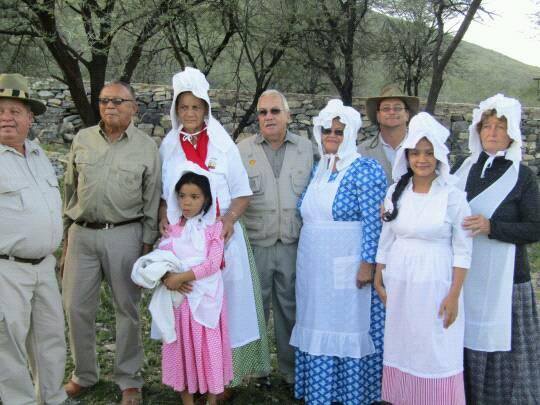Namibia, a country known for its rich diversity, is home to a variety of ethnic groups and communities, each contributing to the fabric of the nation’s cultural identity. Among these groups are the Coloured and Baster communities, who have unique historical backgrounds, distinct cultural practices, and an enduring impact on the country’s social and political life. In this article, we will explore the origins, traditions, and current challenges faced by these communities, offering a closer look at their heritage, identity, and the role they play in modern Namibia.
Who Are the Coloured and Baster Communities?
The Coloured and Baster communities in Namibia are two groups that share some similarities in terms of ancestry and history but have distinct cultural identities. Both groups have mixed racial and ethnic origins, with their ancestry tracing back to a blend of indigenous African, European, and in some cases, Asian roots. These communities have long played an integral role in Namibia’s development, especially in terms of trade, agriculture, and governance.
The Coloured Community
The term “Coloured” in Namibia is often used to describe people of mixed descent, typically those with a blend of African, European, and sometimes Asian ancestry. Historically, the Coloured community developed during the colonial era when African women and European men often formed relationships, leading to children of mixed descent. In Namibia, this group is predominantly found in urban areas, particularly in the coastal towns such as Swakopmund, Walvis Bay, and Lüderitz.
The Coloured community has a rich cultural heritage shaped by its diverse roots. Over the years, they have developed their own unique identity, combining elements of indigenous African culture with influences from European traditions, such as the Dutch and German-speaking customs brought by colonial settlers. Language is a central part of the Coloured identity, with many members of this community speaking Afrikaans, a legacy of the colonial period.
The Baster Community
The Baster people, on the other hand, have a more distinct historical and geographical background. The Baster community primarily resides in the southern regions of Namibia, especially in the areas around Rehoboth, a town known as the heart of the Baster population. The term “Baster” itself refers to people of mixed descent, particularly descendants of European settlers (mainly Dutch and German) and indigenous Khoikhoi people. However, unlike the broader Coloured community, the Baster people’s identity is more closely linked to their specific historical roots in the Rehoboth area.
The Rehoboth Baster were originally a group of people who migrated from the Cape Colony (present-day South Africa) in the early 19th century, led by the charismatic leader, Adam Kok. This migration was prompted by the desire to escape British colonial rule and the harsh conditions of racial discrimination. Over the years, the Baster developed a strong sense of community and cultural identity, maintaining a unique connection to both their indigenous Khoikhoi ancestry and their European settler roots.
Historical Background: From Colonialism to Independence
Both the Coloured and Baster communities in Namibia share a complex and often painful history, marked by colonialism, apartheid, and struggles for self-identity. During the period of German colonial rule and later under South African apartheid, these communities, though not considered “white,” were often subjected to discriminatory laws that restricted their rights, including their ability to own land, travel freely, or access quality education and healthcare.
Under South African apartheid, the Coloured and Baster people were classified as “non-white,” but they were often given more rights than the indigenous African populations. In particular, the Baster people in the Rehoboth area were granted some degree of autonomy through the establishment of the “Rehoboth Baster Self-Government,” which allowed them to govern their own affairs to a certain extent. This special status gave the Baster people a measure of independence during the apartheid era, but it also created tensions between them and other non-European groups.
Despite the challenges, the Coloured and Baster communities were resilient and played an important role in Namibia’s struggle for independence. Many members of these communities were active in political movements, supporting the fight for freedom and equality. Following Namibia’s independence in 1990, these groups, like other Namibian citizens, faced the challenges of nation-building and integration into a democratic society.
Cultural Heritage: Language, Religion, and Traditions
Both the Coloured and Baster communities have preserved aspects of their distinct cultural heritage, blending indigenous traditions with influences from European and other African cultures. Language, religion, and customs are central to the cultural identity of both groups.
Language
For the Coloured community, Afrikaans is the dominant language spoken, reflecting the influence of Dutch and later South African colonialism. While many Coloured people also speak English, especially in urban centers, Afrikaans remains an important part of daily life, cultural expression, and community bonding.
In contrast, the Baster people, while also fluent in Afrikaans, have maintained their own local dialects. The Baster language, often referred to as “Rehoboth Baster,” is a unique blend of Khoikhoi, Dutch, and Afrikaans, which reflects the community’s mixed heritage. This language serves as a powerful marker of the Baster people’s distinct identity, even though it is not widely spoken outside the community.
Religion
Christianity is the dominant religion among both the Coloured and Baster communities, largely due to the influence of European missionaries during the colonial period. Protestantism, in particular, is practiced by the majority of individuals in these communities, although traditional African religious practices also persist in certain families.
The Baster community has a particularly strong attachment to the Dutch Reformed Church, which has historically played a central role in the community’s social and cultural life. Religious gatherings, celebrations, and church events are often important focal points for both communities, helping to strengthen social ties and preserve cultural heritage.
Traditions and Social Life
While both the Coloured and Baster communities have evolved and adapted to modern times, they continue to maintain certain traditional practices that reflect their cultural roots. In the Baster community, traditional ceremonies such as weddings, birthdays, and holidays are celebrated with a mix of African and European influences. These occasions often feature traditional music, dancing, and feasts that highlight the community’s mixed heritage.
The Coloured community, particularly those in urban areas, participates in a variety of modern cultural activities but also holds onto traditions related to food, music, and family gatherings. Events such as the annual Swakopmund Carnival and other regional festivals help to promote Coloured culture while also allowing for the celebration of Namibia’s diverse heritage.
Challenges and Opportunities
While the Coloured and Baster communities have made significant contributions to Namibia’s development, they also face challenges in modern Namibia. One of the primary challenges is the issue of identity. As the country continues to modernize and grow, these communities must navigate their cultural heritage while adapting to the changing social and political landscape.
In addition, there is a growing awareness of the need to address economic disparities between these communities and other groups in Namibia. Many Coloured and Baster individuals live in urban areas, but they still face issues related to access to quality education, healthcare, and employment opportunities. The government and various organizations are working to ensure that all Namibians, regardless of ethnic background, have equal opportunities to succeed.
Namibia’s Coloured and Baster communities are an integral part of the nation’s cultural mosaic. With their unique heritage, language, and traditions, they offer a fascinating glimpse into the diverse history of Namibia. Although they have faced challenges and undergone significant social changes, these communities continue to preserve their identities while contributing to the ongoing development of the country. As Namibia moves forward, the Coloured and Baster communities will remain an essential part of the nation’s rich cultural tapestry, ensuring that their heritage and stories continue to shape the future of this remarkable country.
Join 'Namibia Today' WhatsApp Channel
Get the breaking news in Namibia — direct to your WhatsApp.
CLICK HERE TO JOIN












